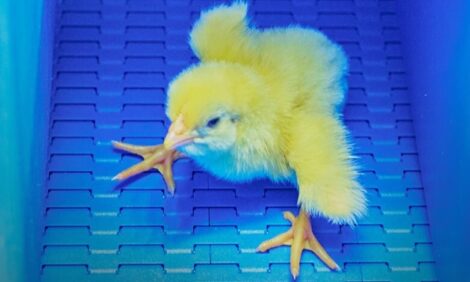



Avian Influenza Virus Evolution and Diversity
Diversity, flexibility, adaptability: three key features that contribute to the efficient transmission and continued existence of influenza A viruses.Influenza A viruses (IVA) are enveloped viruses, classified as a genus in the family Orthomyxoviridae. This virus family includes seven genera housing viruses that cause influenza in vertebrates (Influenza A-D), infect salmon (ISAvirus) or that are arboviruses (Thogotovirus) infecting vertebrates and invertebrates such as ticks and mosquitoes. In humans and farm animals IVA is the most important group, inducing dramatic diseases in humans and other mammals as well as in birds. Based on the variability of the two viral surface proteins, haemagglutinin (HA) and neuraminidase, IVA can be divided into 16 HA- and 9 NA-subtypes, with the recent addition of two new subtypes detected in tropical bats (H17N10, H18N11). In birds, 16 HA and NA subtypes have been detected and can be specifically linked to avian Influenza viruses (AIV). While AIV H13 and H16 have been exclusively recovered from gulls, all other subtypes are maintained in anseriform wild birds. AIV strains circulating in wild birds induce a temporary infection restricted to the epithelium of the upper respiratory tract, air sacs and the gut which can be cleared by the host within 7-10 days. By infecting animals without inducing significant morbidity or mortality an epidemiological host – virus balance is created for these low pathogenic (LP) AIV strains. This forms the basis of a natural AIV reservoir in wild waterbirds with a low virus prevalence of about 1-2 %. Perpetuated AIV circulation is the basis for constant evolution: replication of AIV, with its segmented genome composed of single-stranded RNA, is prone to produce errors in the viral genome. Consequently new mutants, so called “quasispecies”, are constantly being created. In addition, due to the segmented genome, reassortant viruses arise by exchange of genome segments during double infections. Reassorted segments from different subtypes might lead to variants with new biological characteristics. Following the principle of evolution, ecological niches will influence which mutant from the cloud of “quasispecies” will fit best and dominate in a certain host population in the future, or might even be able to switch hosts. Diversity is therefore the key factor which enables IVA to respond to selection pressure and escape extinction.
AIV subtypes H5, H7 and H9 are of economic importance for gallinaceous poultry. In addition, localized AIV-H1, H6 and H10 epidemics are sporadically reported. However, only infections with AIV-H5 and H7 are notifiable to international bodies like the OIE, justified by the emergence of highly virulent H5 and H7 strains from LP precursor viruses. These highly pathogenic (HP) strains have gained the function to replicate systemically in the host and thus induce peracute systemic diseases with high mortality rates that can reach 100%. Flocks can be clinically protected by vaccination, minimizing individual economical loss. However, at a population level, AIV vaccination cannot abolish viral circulation, so creating a situation comparable to LPAIV in wild birds.
Inapparent virus circulation in an almost infinite host population creates the basis for viral diversity, which once again creates the possibility that reassortant viruses arise, able to escape the immune pressure formed by vaccination. Hence, an ongoing monitoring system that includes antigenic characterization of circulating viruses in addition to phylogenic analysis is intrinsic for a successful approach to AIV vaccination. The presentation will summarize key protocols and strategies for successful monitoring of circulating AIV-strains.
Christian GRUND, Martin BEER, Timm HARDER
Friedrich-Loeffler-Institut (FLI), Germany
_________________________________
Information from the Avian Flu Forum hosted by Boehringer on April 2017








